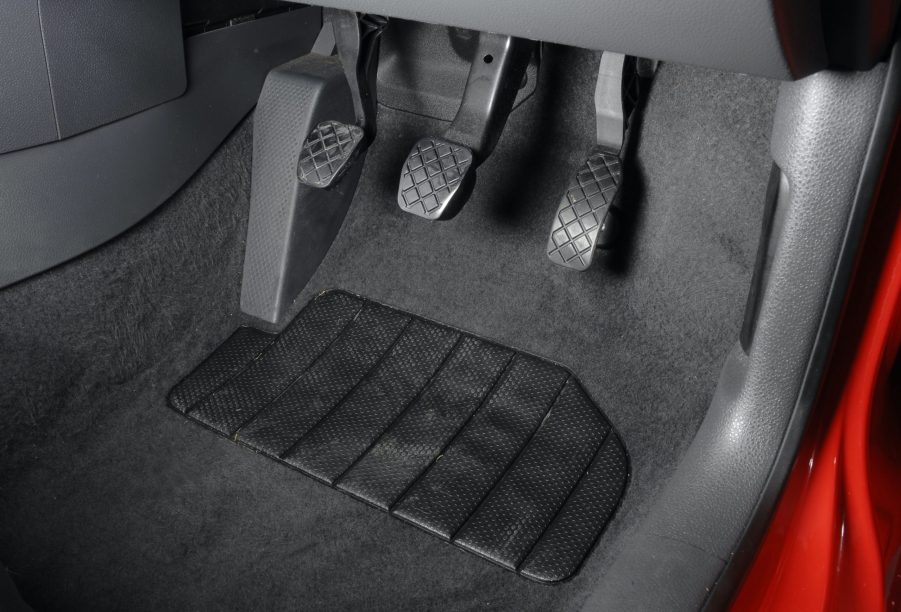
This Is Why You Should Never Partially Press on the Clutch Pedal
Driving a car with a manual transmission can be tricky, especially if you’re just learning how to drive stick. In that case, it’s common for new drivers to “ride the clutch,” which is when the clutch pedal is let out slowly in first gear so that it doesn’t stall. That can lead to premature wear on the clutch. However, that term also refers to when a driver only partially presses on the clutch pedal when in gear, which can greatly damage the clutch as well.
What happens when you partially press on the clutch pedal?
The reason why some drivers have the bad habit of riding the clutch is that it makes the car operate more smoothly. This malpractice typically happens when the car is in too high of a gear and the engine begins to bog or stall. At this point, the driver will typically partially press on the clutch pedal to disengage the transmission from the engine and keep it from stalling.
But what happens when the clutch pedal is partly depressed? Sia Magazin reports that the clutch is essentially two discs – one is attached to the engine, the other to the transmission – and the clutch pedal controls the distance and pressure between the two discs. When the driver presses the clutch pedal in, the pressure between the discs is loosened and the transmission is disengaged from the engine.
When the clutch pedal is not depressed, and the transmission is in a gear, the transmission and engine are connected. However, partially pressing in the clutch will result in the two clutch discs slipping together and causing friction, which can lead to unnecessary wear and more serious issues with the transmission. This process is sometimes referred to as “frying the clutch.”
Symptoms of a worn clutch

If you, or someone you know, has a bad habit of riding the clutch, then here are some signs that that clutch is worn out, according to Go Mechanic:
- Clutch slip: If you notice a faint shudder when letting out the clutch in first gear, then it could mean that the clutch is starting to slip and is worn out.
- Trouble shifting gears: If you have trouble shifting from one gear to the next, then the clutch could be damaged.
- A chirping noise: When releasing the clutch while driving, you may hear a chirping noise that goes away when the clutch is depressed again. This is typically from worn-out clutch release bearings.
- Shuddering: If you notice any shuddering when driving at low speeds and when shifting gears, then it may be time for a new clutch.
Don’t ride the clutch

Considering the cost of replacing a clutch in most cars is around $500 to $1,000 including parts and labor, it’s important not to ride the clutch. Partially pressing the clutch is OK if you’re just learning how to drive stick. But if you’re a seasoned driver, then you should always completely press the clutch pedal down when shifting gears or accelerating out of first gear or reverse. Partially pressing the clutch can lead to premature clutch wear and potentially damage the transmission as well.



